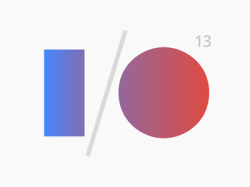 Google I/O 2013 provided a wealth of information, and Google both live-streamed the event and
Google I/O 2013 provided a wealth of information, and Google both live-streamed the event and posted the videos for the sessions. Android developers can learn a lot from this free material, but not everyone has time to watch all the videos (even at 1.5 speed, as I usually watch videos). So, here are more of my notes (don’t forget to see part 1 of my Google I/O 2013 notes).
Design Guidance
As many of us know, good design is more than just skin deep. Graphic design is a necessity, but there are many other things a developer needs to pay attention to when crafting a pleasant experience.
On the subject of ensuring a positive experience when interacting with your app, I caught this:
- Keep it brief (less words makes it easier to read messages)
- Sprinkle encouragement (let the user know when making progress in a longer series of tasks)
- “Not my fault” (don’t blame the user, even when they make a mistake)
That’s a succinct set of guidance, but it might not make as much sense if you haven’t seen the presentation. I suggest watching the “Enchant, Simplify, Amaze” presentation – it provides a lot of good food for thought.
Google Play Billing v3
Quite a bit changed in the latest version of In-App Billing (IAB) for apps on Google Play. If this affects you I suggest viewing the video itself since it contained quite a bit of information.
- Billing v3 is synchronous, and designed to be easier to use than v2
- All purchases are managed items, to make it harder to loose a purchase (e.g. between phones, or in event of app or phone crash).
- “Consume on purchase” to handle consumable items.
- Only a few methods are thread safe – most billing operations should be performed off of the UI thread (e.g. with AsyncTask)
- V3 has some signature verification capabilities built in, which can help prevent spoofing server responses (tampering with the app)
- IAB testing no longer charges the card, so testers don’t need to back out charges made when testing purchases
- The purchase flow has been optimized, which has resulted in a lower customer contact rate
- Google has added more forms of payment (e.g. carrier billing)
- They are “looking into” allowing promo codes, but haven’t announced anything yet
Improvements to Android Developer Console
A few of my favorite new features in the Developer Console:
- Alpha/Beta rollouts – create a new version of your app and only roll out to hand-picked users or members of the press (Alpha) or a percentage of existing users (Beta). This can allow rolling out a new version in phases – and possibly fixing problems before the entire world sees them.
- If seeking to meet the “Designed for Tablets” filter in Google play, follow the tablet optimization recommendations in the Developer Console.
- Tablet-specific screenshot resolutions are supported
- Translation service providers can now be directly accessed and contracted from within the Developer Console.
Android App Discovery – From the Mouth of Google
There’s lots of speculation as to how the app search algorithms work in Google Play, but I/O is a rare opportunity to hear it from Google itself.
- They are now tracking “long installs”, where a user apparently got use out of the app (rather than uninstalling after a few seconds). So, long installs won’t count the same way against the quality score as quick uninstalls do.
- Links to app from web should contain keywords (rather than just “my app”, since that metadata is used by Google to gauge what the app is about.
- Keep APKs small if possible, as large downloads can discourage customers
- They are planning, in the future, to analyze libraries in app to understand what it is about
- I’m not sure what this means, but I wouldn’t be surprised if ad libraries were scrutinized!
- They suggest using the in-app +1 button (this requires using the Google Play Services library, however, which is Google Play specific).
- In-app rate & review is coming soon
They also mentioned the case of an app removing targeting for markets that weren’t appropriate for the app, with the result of much higher ratings. This is an interesting strategy, and particularly useful if you have clearly defined your target market.
Final Thoughts
I enjoyed watching the videos, because there were a number of very interesting tidbits throughout . Even if you can’t dedicate three days to watching every Android related video, I suggest that you pick a few to watch (or listen to them in the background while you work).
I couldn’t list everything here, so please share what you found interesting from Google I/O 2013 in a comment below!
